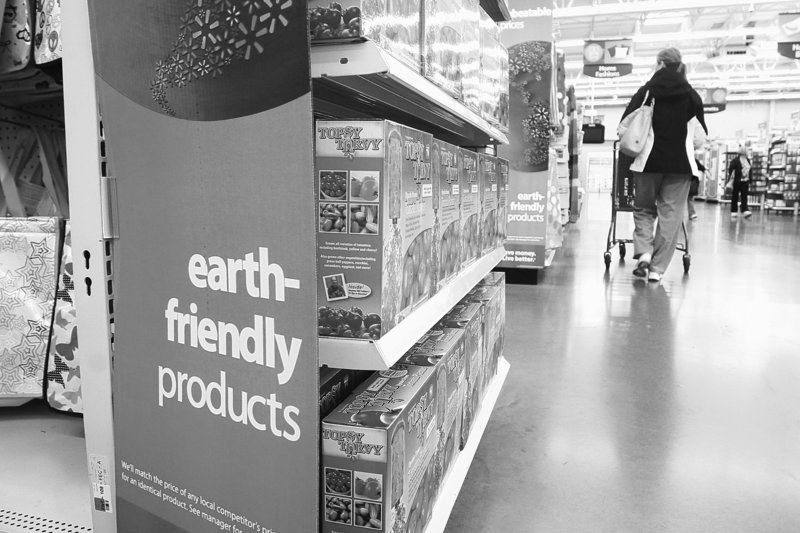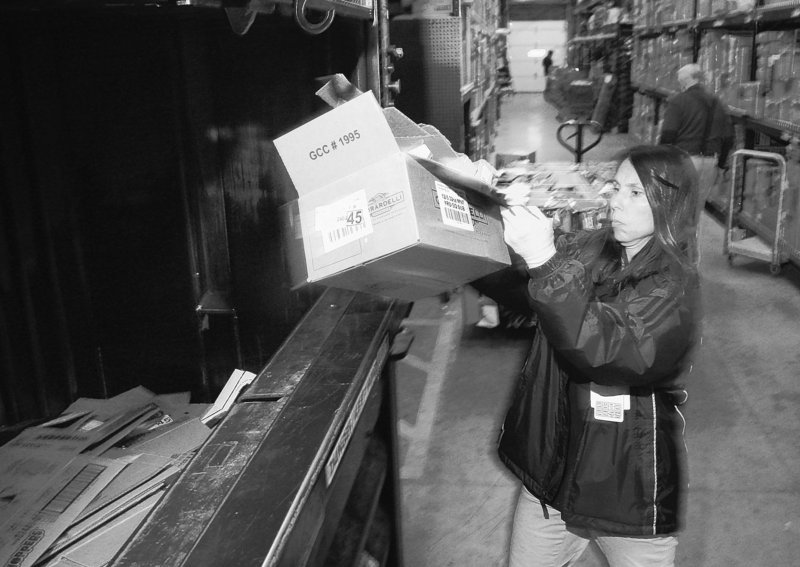CINCINNATI – Going green has become good business.
Just look at store shelves: Sales of “green” products, such as organic foods and natural personal care items, have jumped 15 percent since 2006, according to research firm Mintel International.
A wave of promotion is hitting consumers during this week’s 40th anniversary Earth Day observances: Hanes says it can put you in eco-friendly underwear, Frito-Lay offers Sun Chips from a bag you can toss in a compost pile, and Target stores invite you to use their recycling bins.
Some promotions sound more like image-buffing than Earth-saving, and big companies still have a long way to go to significantly reduce their impacts on air, water and other resources. But environmentalists say the drivers of American consumer culture are starting to make real strides.
“It’s a far cry from where we were,” said Elizabeth Sturcken, who manages corporate partnerships for the Environmental Defense Fund. “Companies are seeing the economic value of going green.”
It’s not just products. Cutting lighting and heating costs, using less packaging, streamlining transportation to save gas, recycling more instead of throwing away — those all help both the environment and the bottom line.
“It would be easy to say that companies really care about the environment only in the third week of April,” said Joel Makower, a consultant and executive editor of Greener World Media Inc. “But most big companies have been taking significant steps. The fact is, they’re doing it for all the right business reasons.”
The behemoth that might drive even more serious improvements is Walmart Stores Inc. It’s urging its suppliers to reduce 20 million metric tons of greenhouse gas emissions by the end of 2015, on top of its own moves to build more energy-efficient stores, use more alternative fuels in its trucks, and reduce packaging.
Shopper Jim Farmer, 68, voiced his approval while looking through Earth Day-themed aisles recently at a West Chester, Ohio, Supercenter.
“I think Walmart is trying to help, and that’s great,” Farmer said. “I have children and grandchildren, and we want to make the Earth a better place for them.”
While surveys show that many consumers want to buy environmentally friendly products, the Great Recession made them reluctant to pay more for them, dampening what had been rapid sales growth.
Mintel International says sales of natural and organic foods and beverages rose 24 percent in 2006-’08, then slowed to less than 2 percent last year; sales of green personal care products jumped 18 percent in ’06-’08, but only 1.2 percent last year.
Walmart tells shoppers in promoting its environmental moves that the cost savings are passed on in low prices: “not just Earth-friendly, we’re also being wallet-friendly.” And P&G’s current “Future Friendly” campaign touts both the environmental and financial benefits of products such as Tide Cold Water detergent, which curtails the toll on utility bills of heating washer water. The consumer products giant also is giving coupons for its green products, and pledges to reach 50 million households with educational information.
That’s only part of a sustainability drive that P&G has made companywide. In one effort, it created a unit three years ago to find new uses for byproducts and leftovers that would otherwise go into incinerators and landfills.
So now, Clairol hair coloring ingredients help make tires shine, Duracell batteries help make bricks, and materials from Pampers diapers and Always maxi pads absorb industrial leaks and spills.
Scott Burns, who heads the unit, said the program has reduced waste disposal by 30 percent, saving money and increasing recycling revenue.
One area where product makers still need to improve, activists say, is in telling consumers in detail about ingredients so they can make their own decisions.
Chris Haack, a Mintel consumer market analyst, adds that many products that claim to be green, natural or organic might have only one ingredient or material that fits the bill. And there aren’t consistent standards for what qualifies as environmentally helpful.
“There is still a lot of what’s called greenwashing out there,” Haack said. “There are a million labels consumers are befuddled. They just don’t know what to trust.”
With the explosion in green promotional claims, the Federal Trade Commission is reviewing its guidelines for environmental marketing. Meanwhile, Walmart says it has been working with suppliers to develop a “Sustainable Product Index” to help guide consumers.
David Steinman, a consumer health advocate and author, urges consumers to push companies for full disclosure and to vote with their pocketbooks.
And Sturcken “would like to see that every product these companies offer is green.”
Send questions/comments to the editors.




Success. Please wait for the page to reload. If the page does not reload within 5 seconds, please refresh the page.
Enter your email and password to access comments.
Hi, to comment on stories you must . This profile is in addition to your subscription and website login.
Already have a commenting profile? .
Invalid username/password.
Please check your email to confirm and complete your registration.
Only subscribers are eligible to post comments. Please subscribe or login first for digital access. Here’s why.
Use the form below to reset your password. When you've submitted your account email, we will send an email with a reset code.